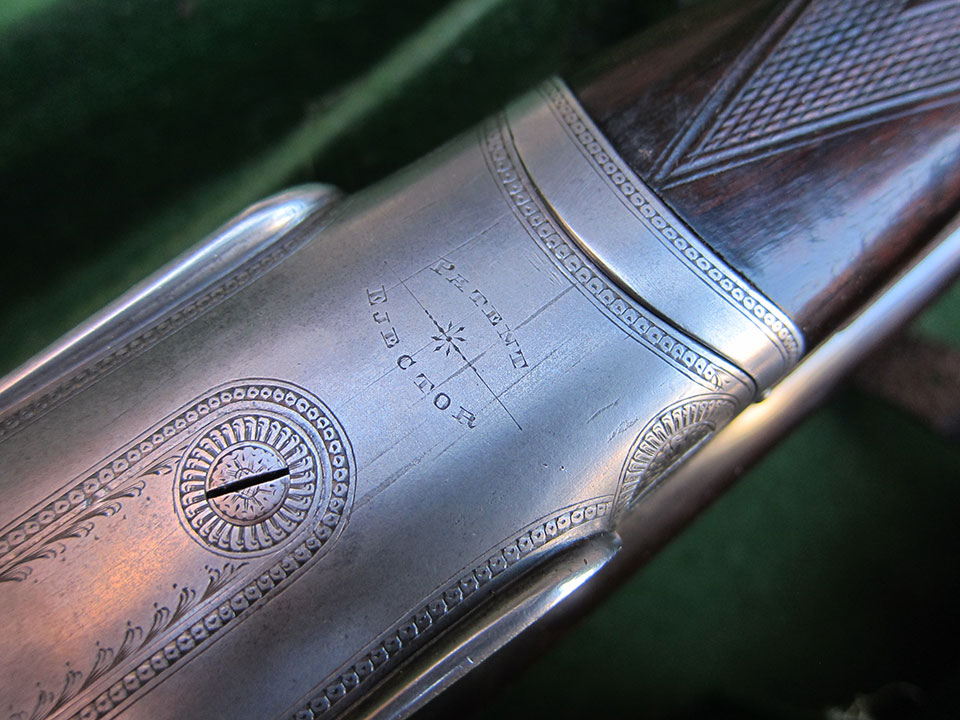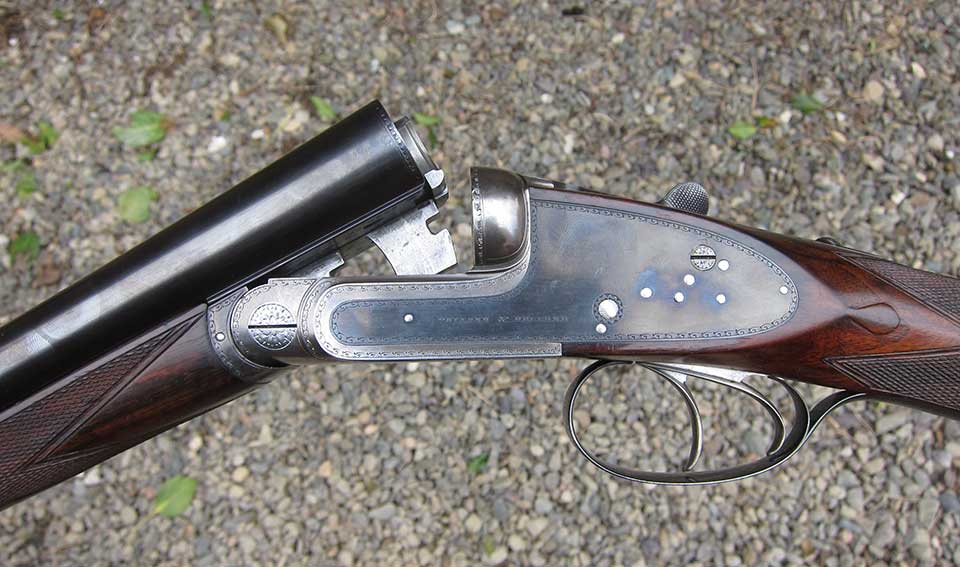Trawling through my catalogues, I often find myself staring at portraits of refined ladies from good families, with perfect pedigrees, all remarkably well-preserved for their age. Unfortunately, their features are not to the prevailing taste of the gentlemen now considering investing in their services. They are all too often overlooked in favour of their gaudy be-jeweled cousins.
Since the English settled on their restrained and unpretentious interpretation of good taste in the aesthetic of sporting guns, some time in the early 1800s, their quiet and superior attitude to the influence of the popinjay and the maccaroni and their spiritual successors from foreign shores has been something of a quietly fought and unsung rearguard action.
With successive nouveau riches clientele demanding their money be loudly evident in everything they spend it on, we have seen Indian princes, Greek shipping magnates, Texan oil barons and Russian oligarchs queue up to tax the sensibilities of the traditional London gunmaker. Much like the Savile Row tailor, the long suffering representatives of the English gun trade must have secretly despaired at the gaudy vulgarity they were required to build into their lovely, functionally perfect and understatedly elegant masterpieces.
However, he who pays the piper has long called he tune and generations of gunmakers have tried their best to interpret the dubious tastes of their customers and incorporate them into sporting guns of which they could be proud. The British have always somehow managed to interpret even the most questionable order with a distinct whiff of class. One example that comes to mind is the ‘Minoudis Purdey’. Mr Minoudis, a Greek with an immediately apparent fixation for one-upmanship, demanded that Purdey provide a letter with his gold-inlaid 12-bore declaring it was the best the firm had ever built. They complied but one can almost hear the discomfort between the lines of the statement.
Much of today’s output is dominated by the bold, chiseled-relief and cross-hatched contrast exemplified by some of the famous Italian engraving schools. Matched with extravagantly figured wood and, often, gold-inlay of the maker’s name, gun buyers increasingly eschew the traditions which made British sporting guns the best in the world.
This, perhaps, explains why auctions are so frequently populated with guns lacking engraving, with plain wood and lacking any obvious signs of quality to the un-tutored eye. In a recent conversation with an American client, he struggled to grasp my contention that ‘quality is where you find it’. The name ‘Boss’ on a gun does not make it a better gun than another. If the quality is the same, it is the same. If you can’t see it, then the name reassures you that you have quality. Better, in my book to be able to see the quality and buy the gun without paying for the cachet of the name!
So many people, however, cannot. They think quality has to mean expensive wood, a famous name, gold inlay or complex engraving. The English aristocracy of old often had the very opposite idea. It seems that for a significant few, the application of engraving, fancy wood or other frippery distracted one from the key thing; the build quality and mechanical precision hand-crafted into the ultimate expression of sporting gunnery.

A couple of recent lots at Bonham’s exemplify such sensibilities. One, a pair of Purdey sidelocks, was built in 1905 for Sir William Eden, 7th Baronet of West Auckland. Eden was something of a renaissance man. A soldier, hunter and horse breeder, he boxed, rode and shot better than most He also painted, collected art and inherited a title, land and money. His guns reflect an independence of mind and inner confidence. He went to the best gunmaker of the day and ordered self-opening sidelocks ‘in the black’. The locks, fences and actions have no engraving at all save the maker’s name and numbers ‘1’ and ‘2’. Both guns have since been re-barreled by the maker.
Another pair, this time by Holland & Holland and made in 1920, also reflect a very unpretentious approach to ordering a pair of quality guns. The ‘Dominion’ model, at the time known as the ‘Number 3’ is a back-action gun, built by W&C Scott on the Scott & Baker patent action. The wood is straight grained and plain compared with modern ideals, the locks border engraved only and the steel barrels 26 ½”, which was the Holland & Holland short-barrel preference, in response to Churchill’s then fashionable XXV concept. H&H applied this length primarily to their ‘Royal Brevis’ model.
When searching auctions for good value, dwell a little on these apparent ‘plain Janes’ and take the trouble to pick one up when in the viewing room. Like the ‘no-name’ best gun, they bear examination and they could just represent that beautiful quality, mechanically perfect gun you always wanted.
You just need to be secure in yourself, knowing that your distinguished lady performs delightfully in your hands and has hidden depths, rather than the obvious charms displayed by many less interesting and fulfilling models with lesser breeding.
Published by Vintage Guns Ltd on (modified )




